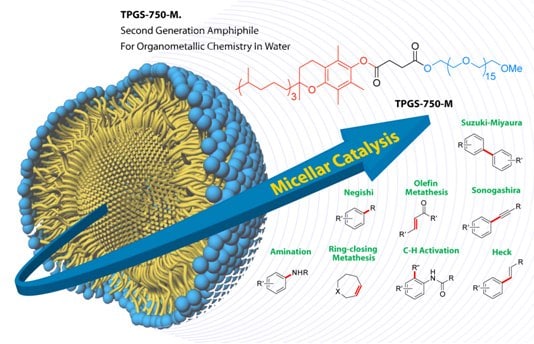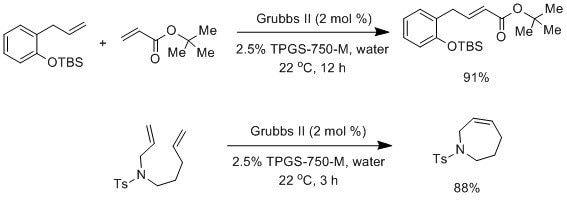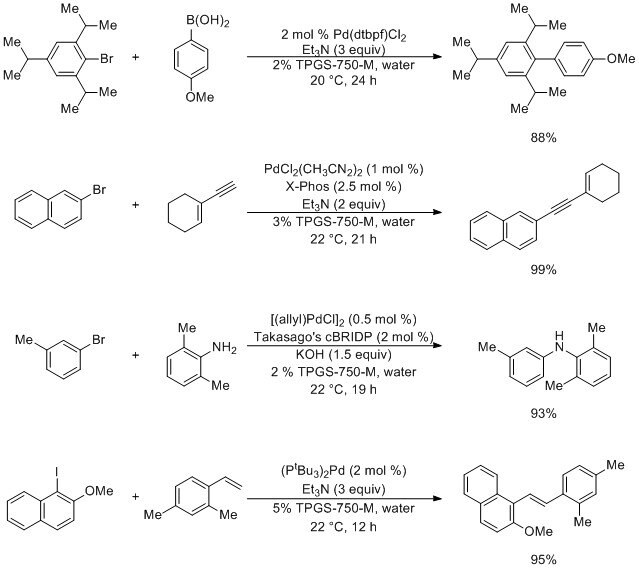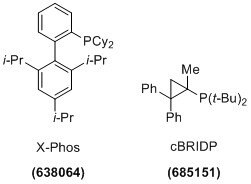TPGS-750-M: Second-Generation Amphiphile

Cross-Couplings in Water
Conducting transition metal-catalyzed cross-coupling chemistry in water instead of organic solvent has a number of potential benefits in terms of cost, environmental impact, safety, and impurity profiles. Increasing focus on the “green-ness” of chemical processes has further promoted recent development in this field. The actual means of implementing reactions in water, however, especially at room temperature and for water-insoluble organic substrates, has not always been clear. One solution that has been applied to a broad range of transition metal-catalyzed processes is the use of small amounts of a nanomicelle-forming amphiphile in water which provides a lipophilic medium where cross-coupling reactions can take place.1,2
Micellar Catalysis
Beginning in 2008, the research group of Professor Bruce Lipshutz has published a series of papers demonstrating the viability of surfactant-promoted, transition metal-catalyzed chemistry in water at room temperature. Using a variety of commercially available surfactants, a number of palladium- and ruthenium-catalyzed processes were found to be amenable to mild, room-temperature reactions in water. Products can be recovered from the aqueous phase using standard extraction procedures and in high isolated yields.2,3
A Second-Generation Amphiphile: TPGS-750-M
Lipshutz and co-workers have recently developed a second-generation technology to their original PTS-enabling surfactant based on the polyoxyethanyl-α-tocopheryl succinate derivative, TPGS-750-M. This designer surfactant is composed of a lipophilic α-tocopherol moiety and a hydrophilic PEG-750-M chain, joined by an inexpensive succinic acid linker. Upon dissolution in water, the amphiphile spontaneously forms micelles. The balance and composition of TPGS-750-M’s lipophilic and hydrophilic components has been tailored to promote a broader array of chemistry in water more efficiently than that seen in PTS. Furthermore, this new, more practical surfactant can be readily substituted for older amphiphiles, usually with equal or greater efficiency in terms of both yield and reaction times.1,2

Olefin Metathesis
Employing the second-generation Grubbs catalyst (2 mol %), a variety of lipophilic substrates successfully undergo ring-closing or cross-metathesis in water at room temperature to produce high isolated yields of the desired products. Reactions were conducted in 2.5% TPGS-750-M/water with yields equal to or slightly better than those performed using various other surfactant-water combinations.1

Pd-Catalyzed Cross-Coupling Reactions
A variety of widely used palladium-catalyzed cross-coupling reactions can now be run under mild room-temperature conditions in water with TPGS-750-M with assorted, commercially available palladium complexes and ligands. These transformations, including Suzuki–Miyaura, Sonogashira, Buchwald–Hartwig amination, and Heck coupling, are amongst the most heavily used bond-forming reactions, both industrially and academically.1

Similarly, the operationally simple Suzuki–Miyaura reaction using micellar catalysis and bis(di-tert-butylphosphino)ferrocene palladium chloride complex provides access to sterically congested substrates at room temperature using triethylamine as the base.
The Sonogashira reaction and Buchwald–Hartwig aminations are also amenable to reaction in water with TPGS-750-M using the palladium chloride/X-Phos combination in the former and allyl palladium chloride/cBRIDP in the latter.1

Heck cross-couplings with aryl iodides can be successfully performed using Pd[P(t-Bu)3]2 as the palladium source in the bulk aqueous environment containing TPGS-750-M (5 wt %), obviating the need for high temperatures commonly associated with Heck reactions.
Zinc-mediated Negishi-like couplings between aryl and alkyl halides can be performed in aqueous TPGS-750-M. Under these conditions, highly moisture-sensitive organozinc halides are formed in situ from an alkyl halide and zinc dust and then react with an aryl halide under palladium catalysis. With the aid of a surfactant and a stabilizing ligand for RZnX, such as tetramethylethylenediamine (TMEDA), this entire process takes place in water, leading to a variety of primary and secondary alkyl-substituted aromatics. The choice of catalyst is crucial for the success of the reaction; Pd(Amphos)Cl2 was found to be the optimal catalyst.1

C-H Activation Reactions
Cationic palladium in combination with stoichiometric oxidant benzoquinone and silver nitrate successfully catalyzes ortho functionalization of a variety of aryl acetamides in water at room temperature using this amphiphile.1

To see procedures using TPGS-750-M please click here.
Materials
References
To continue reading please sign in or create an account.
Don't Have An Account?